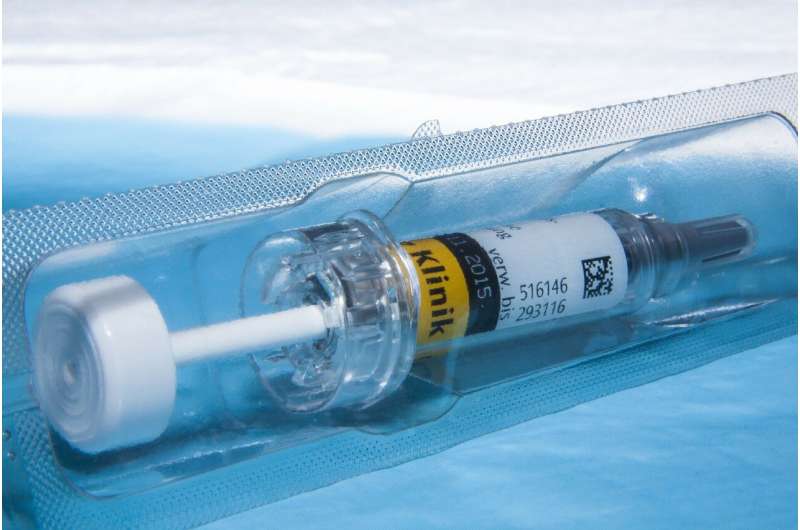Research findings offer new insight into blood thinners and bone builders

Lisa Lock
scientific editor

Andrew Zinin
lead editor

If biomolecules were people, heparin would be a celebrity. Best known as a powerful blood thinner with a global market of more than $7 billion, heparin is used during and after surgery and is essential to kidney dialysis. Most of today's heparin comes from pigs, but the Food and Drug Administration is encouraging the use of alternative sources, including cows and synthetic forms of heparin, to diversify the supply chain.
Unfortunately, heparin from animals other than pigs just doesn't work as well.
The reasons are connected to ongoing questions in modern cell biology. Now, an interdisciplinary Virginia Tech team has uncovered new molecular clues that may explain why some sources of heparin are more effective than others. The findings, recently in the Proceedings of the National Academy of Sciences, may open doors for designing safer, more reliable heparin therapies.
"The structure of heparin and how that structure impacts function is an ongoing puzzle," said Brenna Knight, first author of the study and recent graduate student studying in the Department of Chemistry. "Seemingly small differences in the content and arrangement of [chemical entities called] sulfates on the molecule cause substantial differences in the energetics that drive chemical activity."
From mineralization to medicine
Heparin hails from a family called heparan sulfates, or heparans, present in all living creatures. These chains of sugars are diverse, serve many functions in organisms, and many, including heparin, are incredibly complex.
As a student of Patricia Dove in the Departments of Geosciences and Chemistry, Knight was originally looking at heparans for a completely different reason: to understand how the sulfates could impact biological mineralization, which is the process by which organisms build crystal-strengthened tissues such as bones, teeth, shells, and corals.
Dove, University Distinguished Professor and the C.P. Miles Professor of Science, is one of today's preeminent geochemists and was elected to the National Academy of Sciences in 2012. Unraveling the process of biomineralization has been one of her major passions over the past three decades.
"Animals grow crystals in specific places, usually to make structures that serve to support, defend, or feed themselves." said Dove. "It's a coordinated result of many chemical reactions within the organism and a crowning achievement of biology. We've been trying to better understand the reactions that produce these working biomaterials for a long time."
That mineralization process unexpectedly linked back to medicine.
Heparan sulfates are just one of many different agents that interact with calcium to trigger a diverse portfolio of biochemical operations. One of those operations is integral to blood clotting.
Team science
To better understand how heparan sulfates help facilitate biomineralization, Dove and Knight teamed with Kevin Edgar, professor in the Department of Sustainable Biomaterials, who was interested in heparans from the health care angle. To study the interactions of calcium with heparin, they worked with Michael Schulz and graduate student Connor Gallagher in the chemistry department.
When they applied their combined expertise to calcium–heparin interactions, they found that slight variations in heparin's molecular composition changed how effective it was at binding calcium. These differences could affect its ability to form biominerals and blood thinners.
"This paper provides insights for how to bioengineer synthetic pathways to effective heparin products for applications in therapeutics and drug delivery," Edgar said.
More information: Brenna M. Knight et al, Thermodynamics of calcium binding to heparin: Implications of solvation and water structuring for polysaccharide biofunctions, Proceedings of the National Academy of Sciences (2025).
Journal information: Proceedings of the National Academy of Sciences
Provided by Virginia Tech















